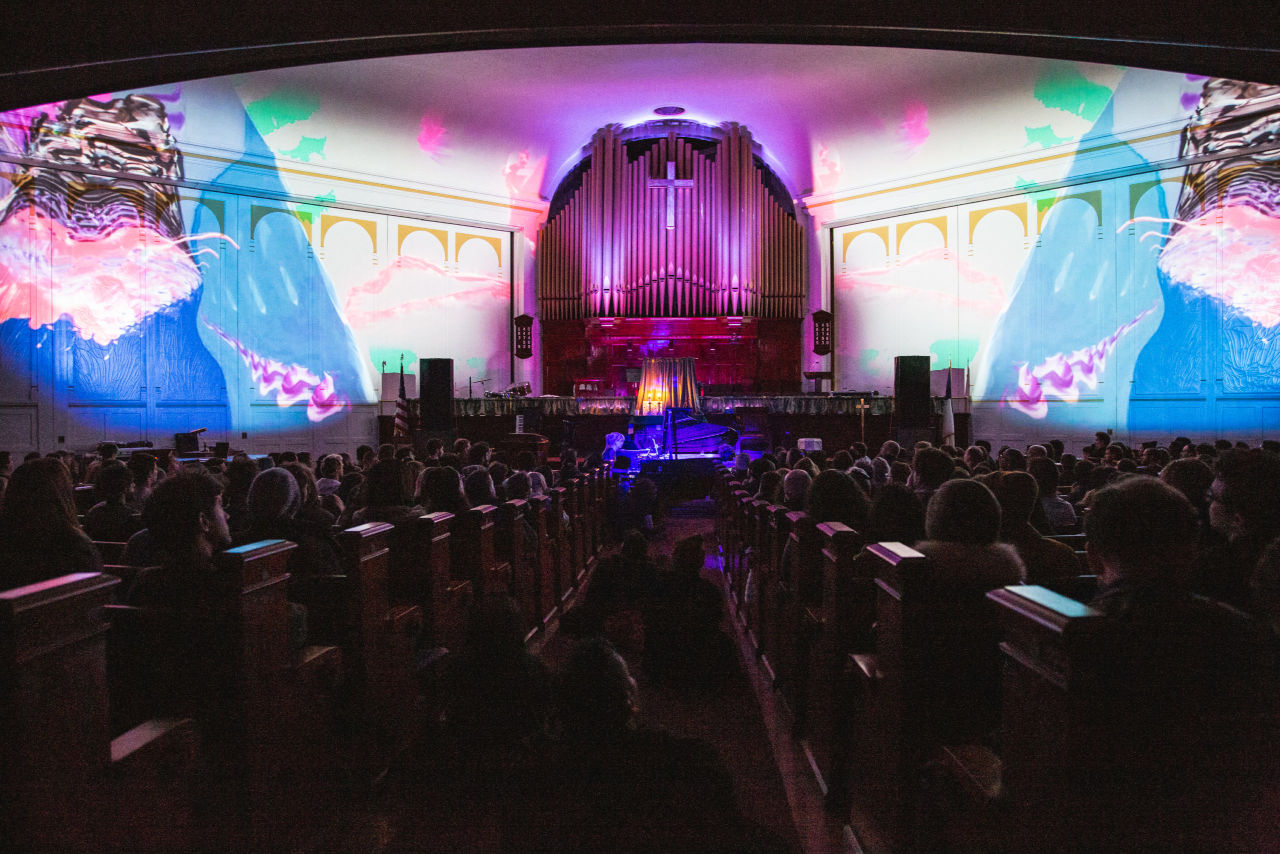 Suzanne Ciani in Quadraphonic Sound at Ambient Church, August 03, 2018
Suzanne Ciani in Quadraphonic Sound at Ambient Church, August 03, 2018
A favorite blog of mine, On An Overgrown Path by Bob Shingleton, published an article entitled “Classical music must break through the electronic glass ceiling.” He cites an Ambient Church show I attended with good friend ryan_project.August 03, 2018: Suzanne Ciani in Quadraphonic Sound, Sarah Davachi
The Suzanne Ciani peformanceCiani performed in support of her album LIVE Quadraphonic. It was distributed with a small device that decoded the record’s quadraphonic image. The release marks Ciani’s first solo Buchla performance in 40 years; it was performed using a Buchla 200e. The next year I happened to bump into an engineer who worked on the decoder at a Brooklyn bar named Mood Ring. It’s a small world. 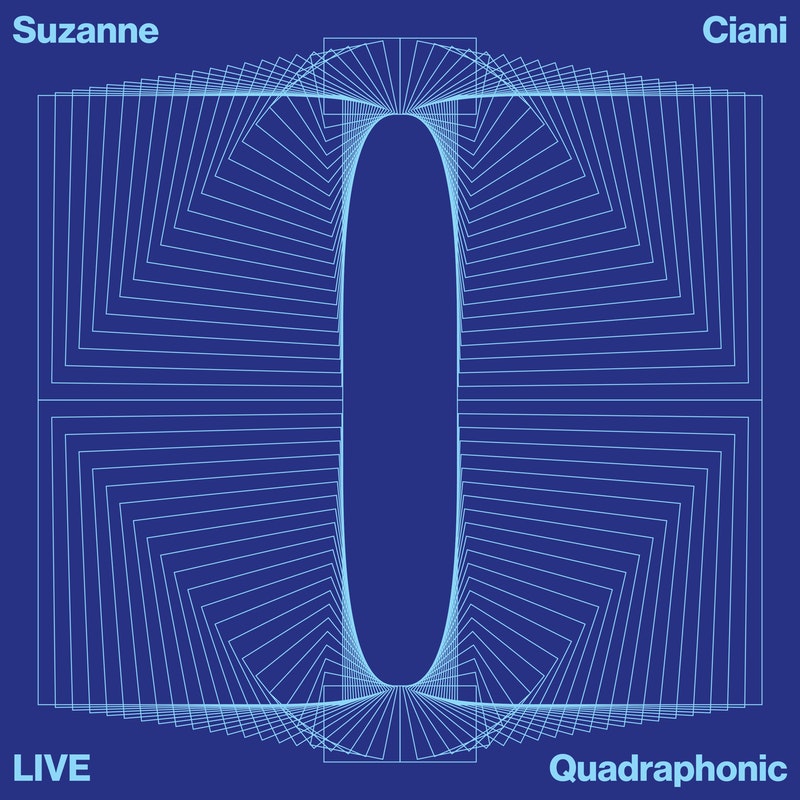
blurred the line between electronic and classical music and featured striking projection-mapped visuals (pictured above).
Ambient Church mirrors the traditions of classical music that can be traced through the genre’s Christian foundations. Founder Brian Sweeny shows a metaphysical interest in mind/body connection. The music he programs is reverent in its own way.“Serious music” has a long history in Western music. Seneca’s quote res severa est verum gaudium (true pleasure is a serious matter) was engraved above the stage at Leipzig’s Gewandhaus Concert Hall. The hall opened thirty years after the death of the city’s most famous citizen, the very serious and deeply devout Johann Sebastian Bach. 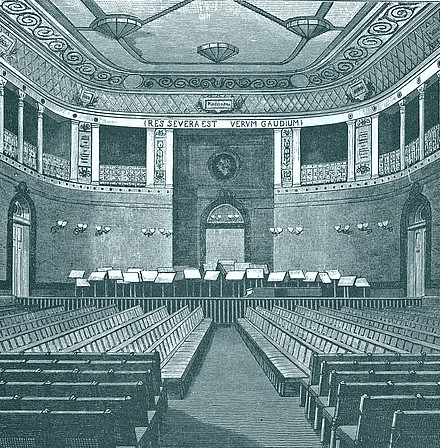 via Gewandhaus Concert Hall
via Gewandhaus Concert Hall
It even (mostly) takes place in a church.
Shingleton often wonders why classical music resists electronic elements like amplification and the use of synthesizers. From the entry:
Why does classical music have such entrenched antagonism towards electronic sounds when one of its most successful recent compositions is closer to ambient electronica than a Beethoven symphony?
I believe the answer partially lies in the way music is written. Musical notation falls short of capturing the composer’s intent, the performer’s performance, and the audience’s experience. However, it is the reason we have access to the music of Bach and Beethoven. Musical scores embody information that has traveled through the centuries, slowly and subtly mutating along the way.
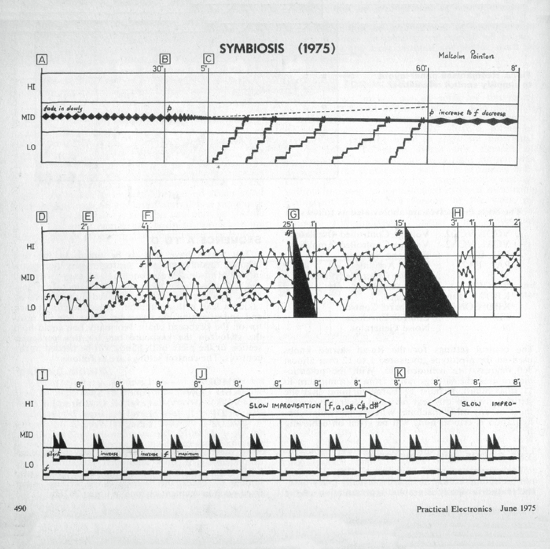 Malcolm Pointon score for Symbiosis (1975) via “Early British electronic music by Malcolm Pointon to be released for the first time” in Wire. More interesting scores are can be found on this thread at llllllll.co.
Malcolm Pointon score for Symbiosis (1975) via “Early British electronic music by Malcolm Pointon to be released for the first time” in Wire. More interesting scores are can be found on this thread at llllllll.co.
Notation provides formality for formal music - music where virtuosity is displayed by the most minute details.
No standard for notating electro-acoustic instruments exist. Performances that include tape, electronic effects, and synthesizers are extremely difficult to notate. The violin has been standardized over hundreds of years. There is no equivalent across the myriad of 20th century musical inventions.
Compare Pointon’s attempt to generalize changes in an electronic sound (above) to music written in Bach’s own hand (below). The music from 1975 more recent, but the notes written in 1723 look and sound much more familiar.
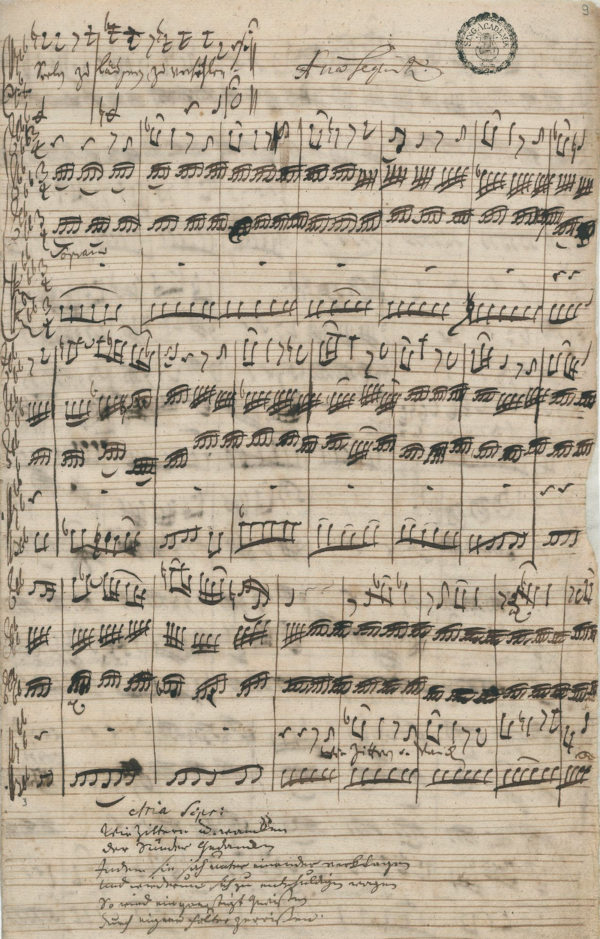 Bach’s autograph of an aria in the cantata Herr, gehe nicht ins Gericht mit deinem Knecht, BWV 105 via Wikipedia
Bach’s autograph of an aria in the cantata Herr, gehe nicht ins Gericht mit deinem Knecht, BWV 105 via Wikipedia
Update March, 10, 2024: Bob Shingleton of On An Overgrown Path recently responded to this post in “There is no right reaction to great music.”
Shingleton was prompted by the oversight of Matangi Quartet’s 2022 album Ruins and Remains in the classical music press; he suggests that the album’s “guardedly hopeful” tone may have caused the omission. Furthermore, Ruins and Remains’ blend of jazz and contemporary classical is a line normally not crossed in the world of symphony halls and churches. The same is true for any blending of electronics and classical I mentioned in Notes From the Ambient Church. Such conventions stifle what is acceptable in the classical music world and might explain why the genre struggles to engage a new young audience.
But I also suggest that this inflexibility might be in the DNA of contemporary classical music - whose medium isn’t the concert hall, it’s notes on a page. Written music is how the genre has been transmitted through the centuries and a hundred years of recorded music isn’t going to move these deeply-rooted foundations. Yet more evidence that Marshall McLuhan was right, the medium is the message.